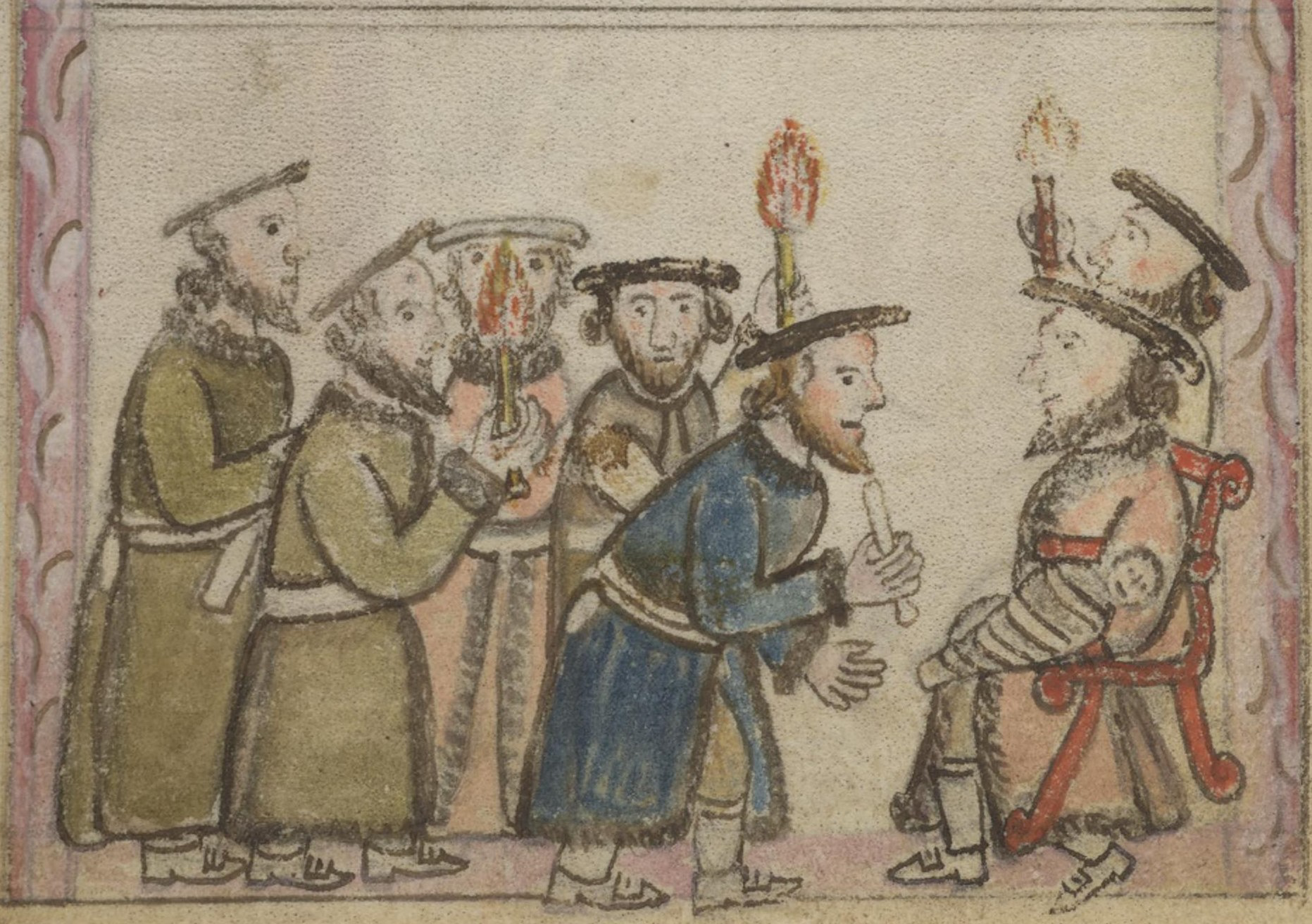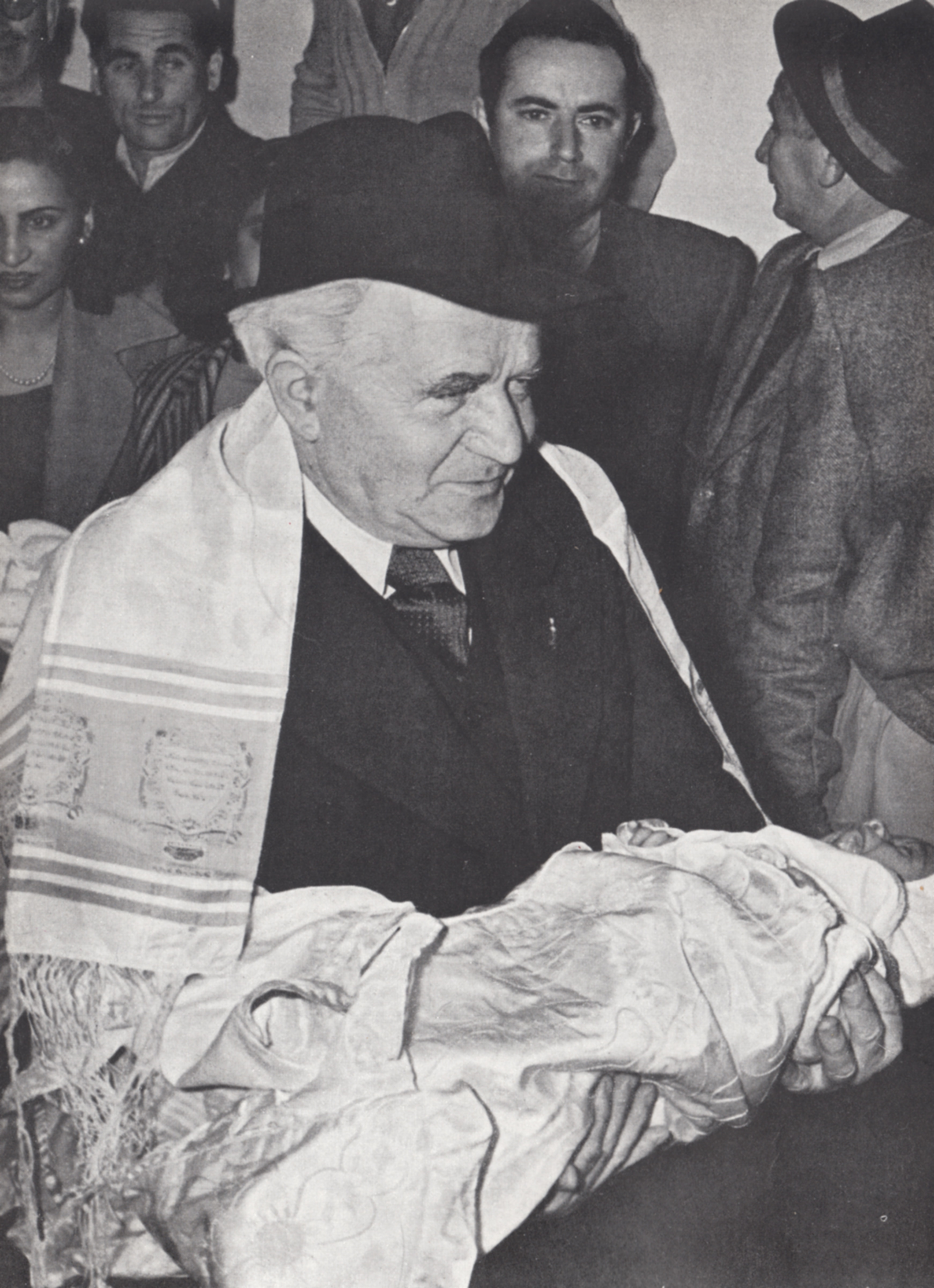|
Isaac Luria
Isaac ben Solomon Ashkenazi Luria (; #FINE_2003, Fine 2003, p24/ref>July 25, 1572), commonly known in Jewish religious circles as Ha'ari, Ha'ari Hakadosh or Arizal, was a leading rabbi and Jewish mysticism, Jewish mystic in the community of Safed in the Galilee region of Ottoman Syria, now Israel. He is considered the father of contemporary Kabbalah, his teachings being referred to as Lurianic Kabbalah. While his direct literary contribution to the Kabbalistic school of Safed was extremely minute (he wrote only a few poems), his spiritual fame led to their veneration and the acceptance of his authority. The works of his disciples compiled his oral teachings into writing. Every custom of Luria was scrutinized, and many were accepted, even against previous practice. Luria died at Safed on July 25, 1572, and is buried at the Safed Old Jewish Cemetery. The Ari Ashkenazi Synagogue, also located in Safed, was built in memory of Luria during the late 16th century. Early life Luri ... [...More Info...] [...Related Items...] OR: [Wikipedia] [Google] [Baidu] |
Kaddish (The X-Files)
"Kaddish" is the fifteenth episode of the The X-Files season 4, fourth season of the American science fiction on television, science fiction television series ''The X-Files''. It was written by producer Howard Gordon and directed by Kim Manners. The episode originally aired on the Fox Broadcasting Company, Fox network on February 16, 1997. The episode is a "Monster-of-the-Week" story, a stand-alone plot unconnected to the series' wider Mythology of The X-Files, mythology, or overarching history. The episode received a Nielsen rating, Nielsen household rating of 10.3 and was viewed by 16.56 million viewers. It received moderately positive reviews from critics. The show centers on Federal Bureau of Investigation, FBI special agents Fox Mulder (David Duchovny) and Dana Scully (Gillian Anderson) who work on cases linked to the paranormal, called X-Files. In the episode, Isaac Luria (Harrison Coe), a Jewish man, is killed by a group of teenagers working for a racist shop owner. One o ... [...More Info...] [...Related Items...] OR: [Wikipedia] [Google] [Baidu] |
Safed Old Jewish Cemetery
Safed (), also known as Tzfat (), is a city in the Northern District of Israel. Located at an elevation of up to , Safed is the highest city in the Galilee and in Israel. Safed has been identified with (), a fortified town in the Upper Galilee mentioned in the writings of the Roman Jewish historian Josephus. The Jerusalem Talmud mentions Safed as one of five elevated spots where fires were lit to announce the New Moon and festivals during the Second Temple period. Safed attained local prominence under the Crusaders, who built a large fortress there in 1168. It was conquered by Saladin 20 years later, and demolished by his grandnephew al-Mu'azzam Isa in 1219. After reverting to the Crusaders in a treaty in 1240, a larger fortress was erected, which was expanded and reinforced in 1268 by the Mamluk sultan Baybars, who developed Safed into a major town and the capital of a new province spanning the Galilee. After a century of general decline, the stability brought by the Ottoma ... [...More Info...] [...Related Items...] OR: [Wikipedia] [Google] [Baidu] |
Brit Milah
The ''brit milah'' (, , ; "Covenant (religion), covenant of circumcision") or ''bris'' (, ) is Religion and circumcision, the ceremony of circumcision in Judaism and Samaritanism, during which the foreskin is surgically removed. According to the Book of Genesis, God commanded the Patriarchs (Bible), biblical patriarch Abraham to be circumcised, an act to be followed by his descendants on the eighth day of life, symbolizing Covenant of the pieces, the covenant between God in Judaism, God and the Jewish people. Today, it is generally performed by a mohel on the eighth day after the infant's birth and is followed by a celebratory meal known as ''seudat mitzvah''. ''Brit Milah'' is considered among the 613 commandments, most important and central commandments in Judaism, and the rite has played a central role in Jewish history, the formation and history of Jewish culture, Jewish civilization. The Talmud, when discussing the importance of ''brit milah'', considers it equal to all ot ... [...More Info...] [...Related Items...] OR: [Wikipedia] [Google] [Baidu] |
Sandek
A sandek or sandak ( "companion of child", from ) is a person honored at a brit milah in Judaism, traditionally either by holding the baby boy on the knees or thighs when the mohel performs the circumcision or by handing the baby to the mohel. In Modern Hebrew, ''sandak'' is also the word for wikt:godfather, godfather; the film The Godfather is known in Hebrew as ''HaSandak''. The role is distinct from that of the :wikt:קוואַטער, ''kvater'', a Yiddish term for the person who carries the baby in Ashkenazi ceremonies. Etymology The origin of the term has been attributed to a derivation from the Greek language, Greek ''sunteknos'' (''syn-'', meaning "plus", and ''tekno'', meaning "child"), which means "companion of child". Alternatively, it may be derived from Greek σύνδικος (Latin, "syndicus"), in the sense of "representative," "patron," "advocate." History A number of references in midrashim and other early rabbinical works testify to the existence of the sandek ... [...More Info...] [...Related Items...] OR: [Wikipedia] [Google] [Baidu] |
Zohar
The ''Zohar'' (, ''Zōhar'', lit. "Splendor" or "Radiance") is a foundational work of Kabbalistic literature. It is a group of books including commentary on the mystical aspects of the Torah and scriptural interpretations as well as material on mysticism, mythical cosmogony, and mystical psychology. The ''Zohar'' contains discussions of the nature of God, the origin and structure of the universe, the nature of souls, redemption, the relationship of ego to darkness and "true self" to "the light of God". The ''Zohar'' was first publicized by Moses de León (c. 1240 – 1305 CE), who claimed it was a Tannaitic work recording the teachings of Simeon ben Yochai (). This claim is universally rejected by modern scholars, most of whom believe de León, also an infamous forger of Geonic material, wrote the book himself between 1280 and 1286. Some scholars argue that the ''Zohar'' is the work of multiple medieval authors and/or contains a small amount of genuinely antique novel mate ... [...More Info...] [...Related Items...] OR: [Wikipedia] [Google] [Baidu] |
Torah
The Torah ( , "Instruction", "Teaching" or "Law") is the compilation of the first five books of the Hebrew Bible, namely the books of Genesis, Exodus, Leviticus, Numbers and Deuteronomy. The Torah is also known as the Pentateuch () or the Five Books of Moses. In Rabbinical Jewish tradition it is also known as the Written Torah (, ). If meant for liturgic purposes, it takes the form of a Torah scroll ( '' Sefer Torah''). If in bound book form, it is called '' Chumash'', and is usually printed with the rabbinic commentaries (). In rabbinic literature, the word ''Torah'' denotes both the five books ( "Torah that is written") and the Oral Torah (, "Torah that is spoken"). It has also been used, however, to designate the entire Hebrew Bible. The Oral Torah consists of interpretations and amplifications which according to rabbinic tradition have been handed down from generation to generation and are now embodied in the Talmud and Midrash. Rabbinic tradition's underst ... [...More Info...] [...Related Items...] OR: [Wikipedia] [Google] [Baidu] |
Tohu And Tikkun
The World of Chaos () and The World of Rectification () are two general stages in Jewish Kabbalah in the order of descending spiritual worlds known as "the Four Worlds". In subsequent creations, they also represent two archetypal spiritual states of being and consciousness. Their concepts derive from the new scheme of Lurianic Kabbalah by Isaac Luria (1534–1572), the father of modern Kabbalah, based on his interpretation of classic references in the Zohar. The implications of tohu and tiqqun underlie the origin of free will and the evil realm of the qlippoth caused by the "Shattering of the Vessels" (), the processes of spiritual and physical exile and redemption, the meaning of the 613 commandments, and the messianic rectification of existence. Tikkun also means the esoteric sifting or clarification () of concealed divine sparks () exiled in physical creation. This new paradigm in Kabbalah replaced the previous linear description of descent by Moses ben Jacob Cordovero w ... [...More Info...] [...Related Items...] OR: [Wikipedia] [Google] [Baidu] |
Qlippoth
In the ''Zohar'', Lurianic Kabbalah, and Hermetic Qabalah, the ''qlippoth'' (, originally , plural of ''qəlippā''; literally "peels", "shells", or "husks"), are the representation of evil or impure spiritual forces in Jewish mysticism, the opposites of the sefirot. The realm of evil is called ''Sitra Achra'' () in Kabbalistic texts. In the Zohar The qlippoth are first mentioned in the ''Zohar'', where they are described as being created by God to function as a nutshell for holiness. The text subsequently relays an esoteric interpretation of the text of Genesis creation narrative in Genesis 1:14, which describes God creating the moon and sun to act as "luminaries" in the sky. The verse "Let there be luminaries ( ''məʾoroṯ'')," uses a defective spelling of the Hebrew plural form for "luminous body, light source" (), resulting in a written form identical to the Hebrew word for "curses." In the context of the ''Zohar'', interpreting the verse as calling the moon and sun " ... [...More Info...] [...Related Items...] OR: [Wikipedia] [Google] [Baidu] |
Elijah
Elijah ( ) or Elias was a prophet and miracle worker who lived in the northern kingdom of Israel during the reign of King Ahab (9th century BC), according to the Books of Kings in the Hebrew Bible. In 1 Kings 18, Elijah defended the worship of the Hebrew deity Yahweh over that of the Canaanite deity Baal. God also performed many miracles through Elijah, including resurrection, bringing fire down from the sky, and ascending to heaven alive. 2 Kings 2:11 He is also portrayed as leading a school of prophets known as "the sons of the prophets." Following Elijah's ascension, his disciple and devoted assistant Elisha took over as leader of this school. The Book of Malachi prophesies Elijah's return "before the coming of the great and terrible day of the ," making him a harbinger of the Messiah and of the eschaton in various faiths that revere the Hebrew Bible. References to Elijah appear in Sirach, the New Testament, the Mishnah and Talmud, the Quran, the Book of Mormon, ... [...More Info...] [...Related Items...] OR: [Wikipedia] [Google] [Baidu] |
Synagogue
A synagogue, also called a shul or a temple, is a place of worship for Jews and Samaritans. It is a place for prayer (the main sanctuary and sometimes smaller chapels) where Jews attend religious services or special ceremonies such as weddings, bar and bat mitzvahs, choir performances, and children's plays. They often also have rooms for study, social halls, administrative and charitable offices, classrooms for religious and Hebrew studies, and many places to sit and congregate. They often display commemorative, historic, or modern artwork alongside items of Jewish historical significance or history about the synagogue itself. Synagogues are buildings used for Jewish prayer, study, assembly, and reading of the Torah. The Torah (Pentateuch or Five Books of Moses) is traditionally read in its entirety over a period of a year in weekly portions during services, or in some synagogues on a triennial cycle. However, the edifice of a synagogue as such is not essential for hol ... [...More Info...] [...Related Items...] OR: [Wikipedia] [Google] [Baidu] |
Sephardic
Sephardic Jews, also known as Sephardi Jews or Sephardim, and rarely as Iberian Peninsular Jews, are a Jewish diaspora population associated with the historic Jewish communities of the Iberian Peninsula (Spain and Portugal) and their descendants. The term "Sephardic" comes from '' Sepharad'', the Hebrew word for Iberia. These communities flourished for centuries in Iberia until they were expelled in the late 15th century. Over time, "Sephardic" has also come to refer more broadly to Jews, particularly in the Middle East and North Africa, who adopted Sephardic religious customs and legal traditions, often due to the influence of exiles. In some cases, Ashkenazi Jews who settled in Sephardic communities and adopted their liturgy are also included under this term. Today, Sephardic Jews form a major component of world Jewry, with the largest population living in Israel. The earliest documented Jewish presence in the Iberian Peninsula dates to the Roman period, beginning in the fir ... [...More Info...] [...Related Items...] OR: [Wikipedia] [Google] [Baidu] |
Ashkenazi
Ashkenazi Jews ( ; also known as Ashkenazic Jews or Ashkenazim) form a distinct subgroup of the Jewish diaspora, that Ethnogenesis, emerged in the Holy Roman Empire around the end of the first millennium Common era, CE. They traditionally speak Yiddish, a language that originated in the 9th century, and largely migrated towards Northern Europe#UN geoscheme classification, northern and eastern Europe during the late Middle Ages due to Antisemitism in Europe, persecution. Hebrew was primarily used as a Literary language, literary and sacred language until its 20th-century Revival of the Hebrew language, revival as a common language in Israel. Ashkenazim adapted their traditions to Europe and underwent a transformation in their interpretation of Judaism. In the late 18th and 19th centuries, Jews who remained in or returned to historical German lands experienced a cultural reorientation. Under the influence of the Haskalah and the struggle for emancipation, as well as the intellec ... [...More Info...] [...Related Items...] OR: [Wikipedia] [Google] [Baidu] |








